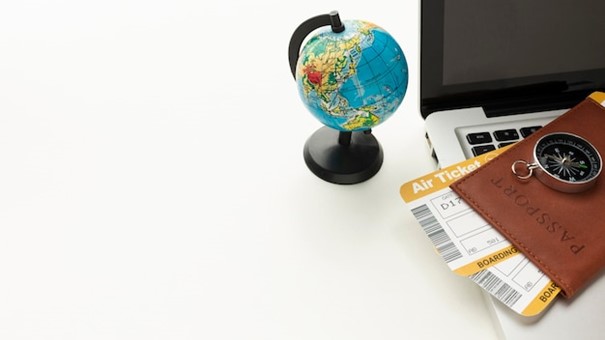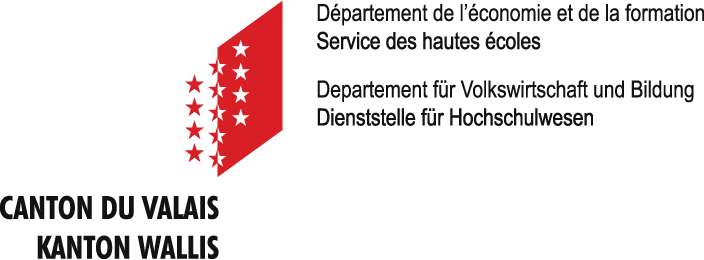Alpine Destinations & Commercial Strategy
Marketing StationDeSki DestinationLessons from the Cruise Industry (Part 1)
This 2 part article will discuss the need for a new sales strategy that aims to create synergy between independent commercial stakeholders, operating in small alpine destinations. The issue is that the attractiveness of a destination is dependent on the prices of the core product which is often the ski-pass (in winter months). The costs associated with offering a modern ski lift are high as related infrastructure is expensive as well as needing a full renovation approximately every 16 years, at a high cost. Also, the cost of meeting strict health and safety regulations is also rather high.
Higher fixed costs per visitor and the changing interests/behaviours of tourists, jeopardise chances of generating profit in these regions, thus severely impact their sustainability. The added perception that Swiss products are significantly more expensive make small alpine destinations appear less appealing, particularly when visitors are looking for ways to save or get more for their money. Another trend that has had a direct impact to the profitability of the Swiss cable-ways is an increasing environmental awareness. More visitors are replacing (or even abandoning) traditional skiing/snowboarding with more eco-friendly mountain activities such as cross-country skiing, snow-shoeing or tour skiing. Though those guests are in the mountains, they are not using the ski-lifts or cable cars, thus decreasing the main source of revenue for smaller resorts (Ward & Jaton Hüni, 2011).
A recent UBS report (2013) identified that commercial operators within smaller Alpine destinations, need to cooperate to survive. The report identified the importance that hotels play in attracting tourists and cable cars as a key tourism attraction in the alpine regions. When these enterprises operate in an isolated way, they do not generate sufficient revenue to sustain them throughout the year. Cable car companies, restaurants, shops and other service providers (ski schools, rentals, sports & leisure activity experience providers) depend on bed occupancy (as well as day visitors), thus the general transportation, accommodation, food and beverage costs need to appear competitive, to attract as many overnight stays as possible. Also, visitors may expect prices to vary, improving when they are willing to pay in advance, spend more, stay longer or stay in periods where demand is lower (for example on weekdays rather than weekends). Dynamic pricing approaches, adopted by all major airlines and many other businesses have made price and the ability to book in advance (and pay less) of greater interest to potential visitors. Thus if there is no information or possibility to obtain a “deal”, then this is likely to deter the visitor from behaving in ways that would be beneficial to the service providers. A particularly valuable behaviour is when customers purchase non-refundable “deals” quite far in advance, as this leads to better revenue/profit generated from non-redemption, re-purchase as well as opportunities arising from visitors having forgotten their original expenditure and arriving at the destination with a “full wallet”.
Tourists do not generally visit mountain resorts with the primary reason of staying in a (particular) hotel, rather they are anticipating an experience that is impacted by the interaction with a range of services they will experience at the destination, judging their stay on the basis of disparate experiences at the local operator level. There is thus a strong argument in favour of combining these diverse services into a single “tourism product”, so as to offer a full destination experience and harness benefits derived from cooperation and synergy.
This next section of this article will explore more creative, sales strategies drawing examples from the dynamic and growing cruise ship industry, where cabin sales are used to break even (i.e. cover the high fixed costs of the cruise) and an on-board revenue manager is responsible to maximize the sales from the passengers during the cruise. In an Alpine destination, “cabin sales” would thus be sales of ski passes (or hotel rooms) and a destination revenue manager could thus be responsible to optimise ancillary sales (during pre-arrival, arrival, occupancy and departure), using a customer centric revenue management approach.
Cruise Lines as a best practice example
The cruise-ship sector is a highly competitive environment that has emerged intact from the recent financial crisis (Bachman, 2014). Cruise-ships have evolved from being transportation vessels to being attractive destinations, with a significant carrying capacity and offering a wide range of luxury experiences (fine restaurants, shops, spas, theatres, gyms, rock-climbing landscapes, mini-golf courses, skating rinks, and various entertainment complexes, as well as convention facilities) within a “floating” resort.
The decline in fares and profit growth in mass market cruising was made possible by economies of scale generated through the use of mega ships and cheap foreign labor. Also, unlike the rest of the tourism sector, where rates vary significantly, cruise fares are quite uniform as ships can move to warmer climates as the seasons change. Fares are more likely to be reduced to fill up empty cabins, depending on demand conditions on individual cruise products. In the USA, cruise-ship customers are mainly frequent traveller (go on more than three holidays a year) college graduates, aged 25+, earning more than $40,000. (Toh et al. 2005). To understand what lies behind the success of cruise lines, one must look first at the logistics surrounding the scheduled day of departure.
Overbooking mainly for cancellations
- Passengers cannot be easily ‘‘walked’’ (or bumped onto another cruise) as those with reservations cannot be asked to take another cruise to a different destination and/or on different days.
- Even if other cabins are not claimed, cabins cannot be reassigned, because cruise lines contact the no-shows and arrange for them to catch up with the ship at the next port of call.
- Most of the clientele are leisure travelers who have booked months in advance and made non-refundable full payments for the entire cruise, the no-show rate is insignificant, less than 1%
Full occupancy strategies
(adapted from Toh, 2005)
-
A growing percentage of revenue comes from on board expenditures (alcoholic drinks, casino operations, sale of goods and souvenirs including photographs, manicures and massages, and on-shore tours, etc.). In 2014, the average spend per passenger per day is projected to be $214.44. This includes $51.74 on board spending during a 1 week cruise (Cruise Market Watch). As floating resorts, cruise companies ensure that there is at least 1 day of uninterrupted sailing on the longer cruises, during which more than half of a cruise line’s revenues are generated. Thus filling up a cruise ship is imperative, even if fares are below cost, because the on-board revenues can and do compensate.
-
A half-empty plane is likely to be a welcome sight for airline passengers, and an empty hotel does not bother necessarily the guests. However, a half-empty ship is not welcomed by passengers, as the ambience is affected for many audience participation activities. Thus, cruise lines will go out of their way to fill cabins up to maintain ambience, by discounting fares as the day of departure approaches, using their network of loyal and well-compensated travel agents.
-
Cruisers are often repeat customers, so getting a first-timer on board is important. Carnival uses a customer tracking system and gives a discount for ‘‘reunion cruises,’’ and organizes a special ‘‘by invitation only’’ event on board the cruise for repeat customers.
-
Proactive management initiatives contribute to financial success starting with an all-inclusive product. For between $100 - $500 a day, passengers get their accommodation, fine dining, free entertainment, while visiting many ports of call, sleeping while en route (an efficient way of sightseeing). New on-board/on-shore activities/themes are continually added, with new cruise lengths to reflect changing vacation patterns.
-
In contrast to the airline industry, cruise lines have deliberately strengthened bonds with travel agents using generous incentives. These are paid 10% commission (15% with incentives) on completed trips as well as deposits forfeited. They also receive bonuses for successfully negotiating with displaced guests. For this reason, many travel agents focus exclusively on cruises.
- Cruise lines have implemented a wide range of safety features such as offshore registration and issuance of photo identity cards. As well as general luggage security checks, passengers and carry-on bags are examined whenever they leave and return to their ship and passenger identities are verified by on screen photographs taken upon embarkation. Then, via the spending cards that are issued to all adults, cruise lines can record and analyse on-board spending patterns e.g. It was noted that singles and couples, without accompanying children, are the highest spend groups. Thus singles and couples are made a priority cruise line accept reservations. Effectively managed on-board surveys also add intelligence e.g. niche cruise lines know that their clientele are well traveled, wealthy, and are highly educated.
-
By giving price guarantees and offering cancellation protection plans, cruise lines have lengthened their booking window (up to a year). In comparison, in hotels, about 80% of individual reservations are made within 30 days of arrival. By requiring deposits and full payment according to well publicised deadlines and penalties, cruise lines reduce late cancellations and no shows. This also enables cruisers to arrive for their cruise with a “full wallet”, ready to splash out on extras (raising on-broad expenditure crucial to profit margins when the cabin has been sold at below cost).
-
Cruise lines allow those who are unsuccessful in reserving a cabin to be put on waitlists, with deposits (higher priority) and without deposits (lower priority). This reduces the disadvantage of not having walk-ins.
-
Cruise lines encourage passengers to purchase total transportation packages with air-bus-ship transfers. Apart from the transportation cost savings and profits to all parties, this seamless method of transfer cuts down on late arrivals. And when they occasionally occur, the cruise line will make an attempt to contact the late arrivals or no-shows, if they bought the total transportation package, to get the party to join the cruise at the next port of call.
There are a number of reasons why cruise line occupancy has outperformed that of hotels; the cruise industry has made travel agents an essential arm of their cabin-inventory management strategy, both in individual and group reservations. Travel agents collect deposits and full payment, track down late arrivals, and conduct silent auctions (Toh et al.,2005). Cruise lines enjoy several advantages that arise from fewer uncertainties: They do not have to worry about early departures and do not have to accommodate overstays, which hotels are often required to do, by law. Also, there are no business travelers, who frequently change travel plans at the last moment.
Bibliography
Bachman J. (2014) A Caribbean Crowded With Ships Means Discounts for Cruise-Goers. Bloomberg Businessweek. Published on February 12th. Available here. Accessed March 2014.
Cruise Market Watch (2014) Financial Breakdown of Typical Cruiser. Available here. Accessed July 2014.
Toh R., Rivers M., Ling T. (2005) Room occupancies: cruise lines out-do the hotels. Hospitality Management 24 121–135
UBS Outlook (2013) Challenges & Opportunities for Alpine Tourism. Accessed on April 2nd from www.sgh.ch/.../2013/UBS-Outlook_Tourismus_f.pdf
Ward W. Jaton Hüni A. (2011) Les stations de ski suisses. Deloitte Report. Available here. Acccessed March, 2014.





